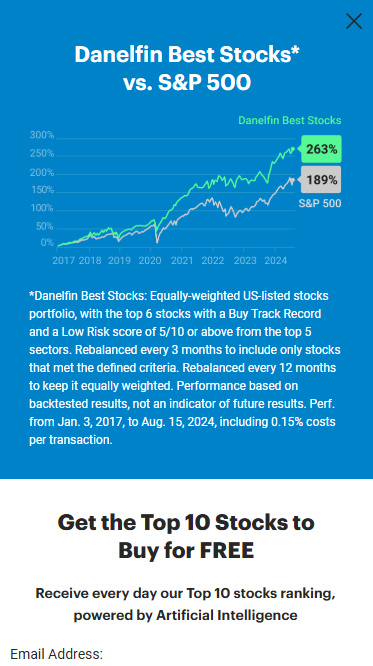AI stock trading platforms that predict and analyze stocks based on AI require compatibility with each other. An AI platform that is seamlessly integrated with the existing tools, systems and workflows of your company will increase efficiency and productivity. Here are the top 10 guidelines for evaluating the compatibility and integration of these platforms:
1. Check Brokerage Integration
Ensure that your platform integrates seamlessly with the brokerage or trading service you would like to use.
Trade execution: Check whether your platform allows you to make trades directly with an integrated broker.
Account synchronization: Verify that the platform can connect in real time to your accounts, balances and positions as well as transaction histories.
2. Check the API's availability
API access is crucial Developers can make use of an API, or Application Programming Interface (API) to create their own tools and automate processes.
API documentation: Check to see if there are examples that clearly demonstrate how the API is used.
Rate limits: Determine whether the API has acceptable rate limits and can accommodate your expected use.
3. Integrating Third-Party Tools
Popular tools: Find out whether the platform is compatible with tools like Excel, Google Sheets, or trading bots.
Export and import of data: Ensure that the platform supports easy export and import of data from and to other tools.
Plugins/extensions: Verify if the platform supports extensions or plugins for further capabilities.
4. Test Compatibility Operating Systems
Desktop compatibility: Ensure that the device is compatible with your operating system of choice (Windows, macOS or Linux).
Mobile compatibility - Check to see if the platform comes with a mobile app available for iOS and Android.
Web-based access: Check that the platform can be accessed via a web browser for added flexibility.
5. Evaluate Data Integration Capabilities
Data sources: Check whether the platform is integrated with multiple data sources (e.g. market data sources or news feeds).
Real-time feeds of data Verify that the platform allows for real-time data integration to offer up-to-date analysis.
Find out if your platform allows historical data import to analyze or backtest.
6. Evaluation of cloud and on-premise compatibility
Cloud-based platforms: Make sure you can access the platform from any place with an internet connection.
On-premises solutions: Verify if you want to deploy the software on your premises.
Look into the hybrid model. It combines on-premise and cloud capabilities.
7. Verify Cross Platform Synchronization
Device synchronization. The platform needs to be able to sync settings and data on all devices including mobile, desktop and tablet.
Check if changes made to a device are instantly reflected on another.
Offline access: Check whether the platform permits only limited access to data or functions in offline mode.
8. Check the whether trading strategies are compatible
Algorithmic trading: Check that the platform supports automated or algorithmic trading strategies.
Custom indicators: Check if your platform allows the use of scripts or indicators that are specific to your needs.
Strategy backtesting. Verify that the platform allows strategies for backtesting based on historical data.
9. Examine Security and Compliance
Data encryption: Check whether the application uses encryption to safeguard data in transit and at rest.
Authentication Verify whether the platform supports secure methods of authentication (e.g. Two-factor authentication).
Regulative compliance: Make sure that the platform is compliant with applicable regulations.
10. Test Scalability and Performance
Scalability is essential. The platform needs to be able handle the growing volume of data and numbers of users.
Performance under load - Verify that the platform is able to continue responding in conditions of high market volatility.
Utilization of resources: Make sure that the system is using resources effectively (CPUs, memory, bandwidth).
Bonus Tips
User feedback: Research user reviews and testimonials to assess the integration capabilities of the platform.
Trial period: Test the platform free of charge or download a demo and see how it integrates with your existing software and workflow.
Customer Support: The platform should provide a solid support service for integration issues.
Follow these tips to assess the compatibility and integration between AI stock Predicting/Analyzing platforms and your existing trading systems, and ensure they enhance your trading efficiency. Read the recommended best ai trading app for website recommendations including AI stock trading, best AI stock, ai for trading, incite, ai investing app, ai investing, chatgpt copyright, best AI stock, AI stock market, best ai trading app and more.

Top 10 Tips On Assessing The Scalability Ai Software For Predicting And Analysing Trading Platforms
To ensure AI-driven stock trading and prediction platforms can scale, they must be able to deal with the growing amount of data and the complexity in markets, in addition to the demands of users. Here are 10 best strategies for evaluating scalability.
1. Evaluate Data Handling Capacity
Tip: Check if the platform can analyse and process large data sets (e.g., historical stock data, real-time market feeds, and other data sources like news and social media).
Why: Scalable platforms need to be able to handle growing volumes of data without compromising performance.
2. Test real-time processing capabilities
TIP: Examine how the platform handles live data streams, such as live stock prices or breaking news.
What is the reason? The importance of real-time analysis is for trading decisions, and delay can result in miss opportunities.
3. Cloud Infrastructure Elasticity and Check
Tips: Find out whether the platform utilizes cloud-based infrastructure (e.g., AWS, Google Cloud, Azure) and has the ability to scale resources in a dynamic manner.
The reason: Cloud platform elasticity allows the system's size to adapt based on usage.
4. Algorithm Efficiency
Tips: Examine the efficiency of computation in AI models (e.g. deep learning or reinforcement learning, etc.)) employed to predict.
Why? Complex algorithms can be resource-intensive. Making them more efficient to allow them to scale is crucial.
5. Explore the possibilities of Parallel Processing and Distributed computing
Tip: Verify if the platform uses parallel processing frameworks or distributed computing frameworks.
Why: These new technologies provide faster data analysis and processing across multiple nodes.
6. Review API Integration and Interoperability
Test the platform’s ability to incorporate APIs from other sources.
The reason: seamless integration means that the platform is able to adapt to the changing data sources and trading environments.
7. Analyze User Load Handling
Try simulating high traffic levels to see how your platform will perform.
Why: A scalable platform will provide performance even when the amount of users grows.
8. Examine the model of Retraining and its adaptability
Tips: Find out how frequently and effectively the AI models have been trained using new data.
Why? Markets are constantly changing, and models have to be able to change quickly to remain accurate.
9. Check Fault Tolerance (Fault Tolerance) and Redundancy
TIP: Make sure your system has redundancy and failover mechanisms for dealing with hardware or software malfunctions.
Why? Downtime in trading is costly, which is why fault tolerance is crucial to allow for scaling.
10. Monitor Cost Efficiency
Tip: Evaluate the cost of scaling the platform, including cloud resources, data storage, and computational power.
Why: Scalability must not be at the cost of unsustainable costs. Therefore, it is crucial to find a balance between performance and cost.
Bonus Tip: Future-proofing
Assuring that the platform will be able to handle the latest technology (e.g. advanced NLP quantum computing, quantum computing) and regulatory changes.
By focusing your attention on these aspects and focusing on these factors, you can evaluate the capacity of AI prediction and trading platforms. This will ensure that they will be robust and efficient and also prepared for growth. Follow the most popular stock predictor blog for blog examples including ai options, ai options, chart analysis ai, ai copyright signals, ai options, best AI stocks, stocks ai, best ai penny stocks, chart analysis ai, ai tools for trading and more.
